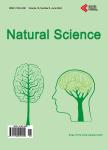Diet breadth variation and trophic plasticity behavior of the African bonytongue <i>Heterotis niloticus</i>(Cuvier, 1829) in the SôRiver-Lake Hlan aquatic system (Benin, West Africa): Implications for species conservation and aquaculture development
Diet breadth variation and trophic plasticity behavior of the African bonytongue <i>Heterotis niloticus</i>(Cuvier, 1829) in the SôRiver-Lake Hlan aquatic system (Benin, West Africa): Implications for species conservation and aquaculture development作者机构:Département de Physiologie Animale Laboratoire de Pharmacologie Faculté des Sciences et Techniques Université d’Abomey- Calavi Cotonou Bénin Faculté d’Agronomie Université de Parakou (UNIPAR) Parakou Bénin PRECOB Unité de Recherches sur les Zones Humides Département de Zoologie Faculté des Sciences et Techniques Université d’Abomey-Calavi Cotonou Bénin
出 版 物:《Natural Science》 (自然科学期刊(英文))
年 卷 期:2013年第5卷第12期
页 面:1219-1229页
学科分类:1002[医学-临床医学] 100214[医学-肿瘤学] 10[医学]
主 题:African Bonytongues Aquaculture Conservation Diet Breadth Foraging Behavior Gill Raker Omnivore Trophic Plasticity
摘 要:The African bonytongue, Heterotis niloticus (Pisces: Osteoglossidae), is an omnivore foraging mainly on aquatic insects, microcrustacea, seeds and detritus. We examined the diet breadth and the trophic plasticity behavior of this species (1461 specimens) in the S? River and Lake Hlan water system located in the southern Benin (West Africa). Overall, the mean diet breadths of the two populations of Heterotis from both habitats were not significantly (p ≥ 0.05) different and were not associated with seasons. However, in Lake Hlan, mean diet breadths tended to increase with size (r = 0.81) and gut length (r = 0.82) indicating that bonytongues ingest a broader range of food resources as they grow. In both habitats, the positive correlation of both standard length (Log SL) and gut length (Log GL) with the volumetric proportions of detritus and with the volumetric proportions of seeds suggests that the consumption of these two food resources increased with the size of Heterotis and with the development of the digestive tract. Likewise, the negative correlation of both (Log SL) and (Log GL) with the volumetric proportions of aquatic insects and with the volumetric proportions of microcrustacea suggests that the consumption of these two food categories decreased as the size and the gut length of Heterotis increased. The differences in the consumption of microcrustacea (13.77% in Lake Hlan versus 2.63% in S? River) and mollusks (0.73% in Lake Hlan versus 4.91% in S? River) evidenced that Heterotis shifts his trophic structure according to resource availlability in the habitat. This foraging behavior suggests a degree of trophic plasticity in Heterotis. The specialized morphological structure of Heterotis, mainly the presence of a relatively high number of gill rakers (42 - 94 rakers on the first branchial arch) during its whole life, allowing sieving of zooplankton and other microcrustacea, and the presence of the gizzard favored this trophic plasticity. The broader diet bre



